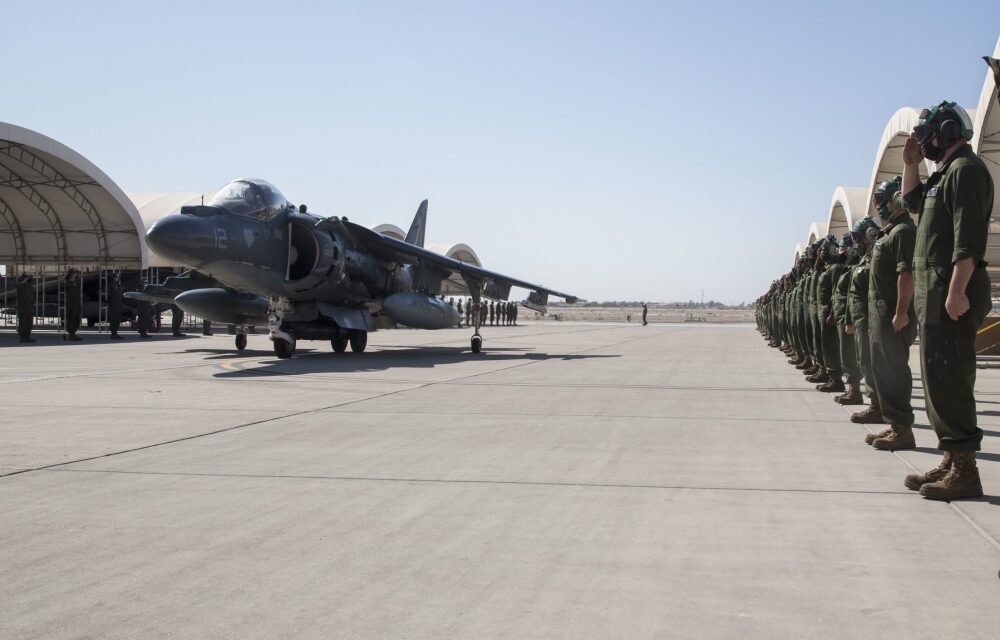
Marine Corps Air Station Miramar, Calif.–Marine Attack Squadron (VMA) 311 conducted a sundown ceremony at Marine Corps Air Station Yuma on October 15.
In spring 2022, VMA-311 will merge with VMA-214 to fly the F-35B Lightning II to form Marine Fighter Attack Squadron 311 at Marine Corps Air Station Miramar.
The VMA-311 Tomcats were initially commissioned in 1942 as a fighter attack squadron in Cherry Point, N.C. The Tomcats deployed in support of the WWII island hopping campaign, and flew the first Marine jet combat mission in 1950 during the Korean Conflict. VMA-311 was named Marine Corps Aviator Association’s Attack Squadron of the Year in 1988 and 1991, and became the first Marine squadron to employ the AV-8B Harrier in combat during Operation Desert Shield. VMA-311’s Harriers were the first to fly combat missions in Afghanistan during Operation Enduring Freedom, and participated in the first combat sortie of Operation Iraqi Freedom in 2003. With a longstanding tradition of aviation firsts, VMA-311 remained an integral force in the nation’s forward presence around the globe.
“The reputable Tomcats have an exceptional level of esprit de corps representing 78 years of superior performance,” said Sgt. Maj. Colin Barry, VMA-311 sergeant major. “The Tomcats imbued a level of morale within each other that was unmatched, but I have no doubt the newly adopted VMA-214 Black Sheep identity will be embraced, and they will continue performing remarkably.”
While VMA-311 is proud to have employed the Harrier in support of numerous military conflicts, the Marine Corps’ transition to the F-35B marks one of the many advancements that the Marine Corps is taking to maintain air-superiority and ensure mission readiness. Though the F-35B and the AV-8B both offer vertical lift and takeoff capabilities, the F-35B is unmatched in terms of versatility, lethality, and reduced pilot fatigue. The F-35 represents the future of Marine Corps tactical aviation, and will deliver strategic agility, operational flexibility, and tactical supremacy to the Marine Air Ground Task Force.
3rd MAW continues to “Fix, Fly and Fight” as the Marine Corps’ largest aircraft wing, and remains combat-ready, deployable on short notice, and lethal when called into action.




